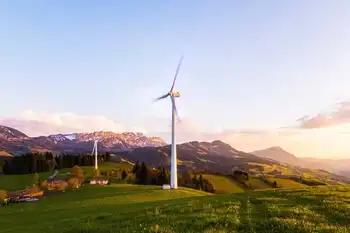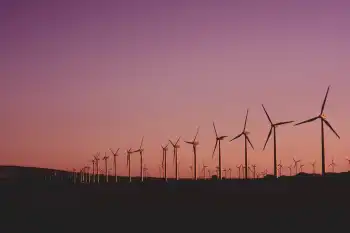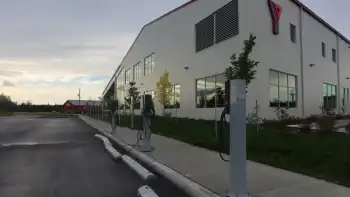Feds announce $500M contract with Edmonton company for green electricity

Protective Relay Training - Basic
Our customized live online or in‑person group training can be delivered to your staff at your location.

- Live Online
- 12 hours Instructor-led
- Group Training Available
Canada Renewable Energy Partnerships advance wind power and clean electricity in Alberta and Saskatchewan, cutting emissions and supporting net-zero goals through Capital Power and SaskPower agreements with Indigenous participation and 25-year supply contracts.
Key Points
Government-backed deals with Capital Power and SaskPower to deliver clean electricity and reduce emissions.
✅ 25-year renewable supply for federal facilities
✅ New Halkirk 2 Wind project in Alberta
✅ Emissions cuts with Indigenous participation
The Government of Canada has partnered with two major energy providers in Western Canada (Prairie provinces) on renewable energy projects.
Tourism Minister Randy Boissonnault appeared in Edmonton on Friday to announce a new Alberta wind-generation facility in partnership with Capital Power.
It's one of two new energy partnerships in Western Canada as part of the 2030 emissions reduction plan by Public Services and Procurement Canada.
On Jan. 1, the federal government awarded a contract worth up to $500 million to Capital Power to provide all federal facilities in Alberta with renewable electricity as part of Alberta's renewable energy surge for 25 years.
"We're proud to partner with the government of Canada to help them reach their 100 per cent clean electricity by 2025 goal," said Jason Comandante, Capital Power vice president of commercial services.
The agreement also includes opportunities for Indigenous participation, including facility development partnerships and employment and training opportunities.
"At Capital Power, we are committed to net-zero by 2045, and are proud to take action against climate change. Collaborative agreements like this help support our net-zero goals, provide us opportunities to meaningfully engage Indigenous communities, and help decarbonize Alberta's power grid," Comandante said.
Capital Power will provide around 250,000 megawatt-hours of electricity each year through existing renewable energy credits while the new Capital Power Halkirk 2 Wind facility is being developed.
Located near Paintearth, Alta., the proposed wind farm will have up to 35 turbines and generate enough power for the average yearly electricity needs of more than 70,000 Alberta homes.
The project is currently awaiting regulatory approval, within Alberta's energy landscape, with construction projected to begin this summer. When complete, it will supply 49 per cent of its output to the federal government.
"Through the agreement, the federal government is supporting the ongoing development of renewable energy infrastructure development within the province," Boissonnault said.
The new partnership will join another in Saskatchewan and complement Alberta solar facilities that have been contracted at lower cost than natural gas.
In 2022, the federal government signed an agreement with SaskPower to supply clean electricity to the approximately 600 federal facilities in Saskatchewan. That wind project is expected to come online by 2024.
Boissonnault said the two initiatives combined will reduce carbon dioxide emissions in Alberta and Saskatchewan by about 166 kilotonnes.
"That is the equivalent of the emissions from more than 50,000 cars driven for one year. So, if you think about that, that's a great reduction right here in Alberta and Saskatchewan," he said.
"These are concrete steps to ensuring that Canada remains a leader of renewable energy on the global stage and grid modernization projects to help the fight against climate change."











